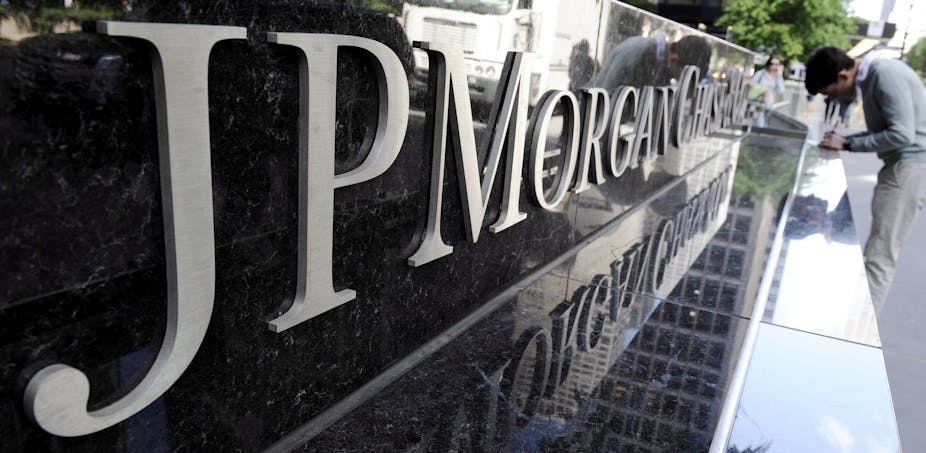Last week, the Australian Financial Markets Association (AFMA), the investment bankers’ trade union, announced that it was changing the way that it calculated the Bank Bill Swap rate (BBSW), the Australian equivalent of LIBOR.
After years of claiming that abuses of this key interest rate benchmark couldn’t possibly happen here AFMA has done a complete about-face on the BBSW mechanism. In future, rather than a “panel” of banks estimating BBSW rates, the rates will be extracted “directly from trading venues (brokers and electronic markets)”.
In an Orwellian justification, AFMA portrayed the “enhancement” as an advantage that “will remove the need for a BBSW Panel, which will eliminate the associated compliance and ancillary costs which otherwise exist for panellist banks”.
This 180 degree spin is not only a blow to AFMA (but they have a very thick skin) it is also a slap in the face for the RBA.
Last year, during the parliamentary enquiry into the effects of the global financial crisis on the Australian banking sector, Guy Debelle, RBA Assistant Governor for Financial Markets, was asked about the LIBOR scandal then breaking in Europe. Debelle was circumspect but nonetheless took the party line:
“I do not think there are any direct implications from what is happening at LIBOR to here. I am sure there are some people who are affected by it but it is not something that has a lot of large direct implications.”
A few months later, it transpired UBS had, in fact, tried to manipulate BBSW, although we wait to see the extent (if any) of such manipulation.
With the announcement of the sharp about turn by AFMA, Debelle and the RBA may have to wipe more than the weekend’s chocolate Easter eggs off their collective faces.
First, why is BBSW important?
The numbers are huge and definitely warrant the attention of the RBA. Bloomberg has estimated at least “A$350 billion of Australian syndicated loans and floating-rate bonds are priced off BBSW”, [and] trading of swaps, forward rate agreements and options tied to BBSW are worth more than A$8.7 trillion in the 2009 financial year.
It was manipulation to produce profits from interest rate derivatives, not loans, which caused the LIBOR scandal at major banks, including UBS and RBS.
Second, why is this about-face happening now?
Just last week, the US Federal Home Loan Mortgage Corporation, commonly known as Freddie Mac, filed a lawsuit in US District Court, which named 29 major financial institutions, including Citigroup, JP Morgan, RBS, Credit Suisse and others, as defendants in what may turn out to be a multi-billion dollar settlement. Freddie Mac is claiming unspecified damages for losses it sustained as a result of the banks’ “unlawful conduct”.
Interestingly, the British Bankers’ Association (BBA), which operated LIBOR - in the same way that AFMA runs BBSW - was also named as a defendant in Freddie Mac’s action. The alarm bells must have rung really loudly at AFMA at the prospect (however remote) of being named as a defendant in a criminal lawsuit.
Alarm bells have also been ringing at the big banks as they too have been abandoning the sinking ship, because of concerns for potential criminal liability.
So what has AFMA proposed?
We don’t know the details yet but it is suggested that will BBSW will be “calculated directly using prices from brokers and electronic markets instead of asking a panel of banks”.
Sound reasonable, but the devil is in the detail. A similar suggestion was considered by the official Wheatley inquiry into manipulation of LIBOR but was dismissed as unsatisfactory.
“A transaction data approach is not immune to manipulation. Particularly in a low volume environment, only a small number of transactions at off-market rates would be sufficient to move the final rate fixing. Manipulation of this type may be harder to monitor as it could be attempted by both internal and external parties”
But there is a much deeper question?
Why should AFMA, which after all is a trade association, be involved in operating what is an essential piece of financial infrastructure?
The problem is not so much the technical mechanism for calculating a particular benchmark, but running the process for monitoring the calculation of the benchmark and taking action when manipulation occurs. Neither BBA nor AFMA would appear to be sufficiently independent to eliminate the conflicts of interest inherent in being both operators and major users of their respective benchmarks.
For that reason, Martin Wheatley, the new head of the UK Financial Conduct Authority (FCA), has recommended that operation of LIBOR be taken away from the BBA and delegated to a new independent organisation. He also proposed that manipulation of any financial benchmark be made a criminal offence.
Even the Basel Committee, the Central Bank regulator, has woken up and just last month issued a report, which was, for it, untypically assertive “Central banks should continue to support the development of well-functioning money markets, in line with their primary policy objectives. This includes close monitoring of developments and structural changes in the relevant markets, and constructive interaction with market participants on an ongoing basis”. In other words - do something!
The question is not what AFMA should do next? The question is what should ASIC, as market regulator, do next?
ASIC chairman Greg Medcraft should immediately initiate an inquiry into what the new mechanism for setting the key Australian interest rate benchmark should be (now that everyone is agreed that a new mechanism is needed).
He should also request AFMA, as a market operator, to develop plans to cater for any risk of this critical rate mechanism failing if more panel banks were to defect.

